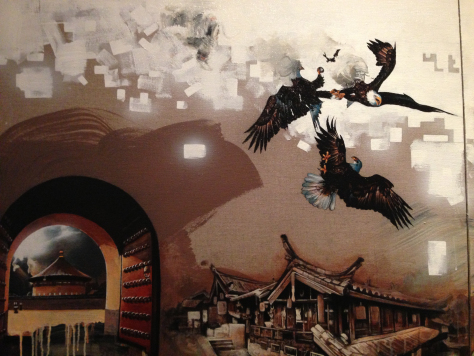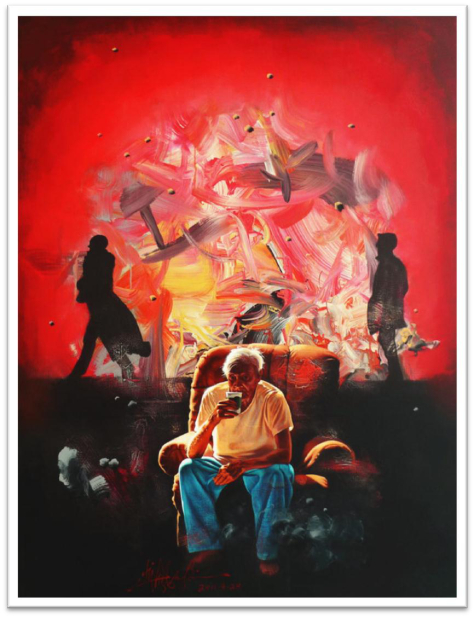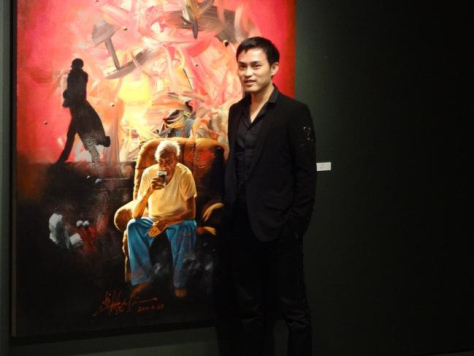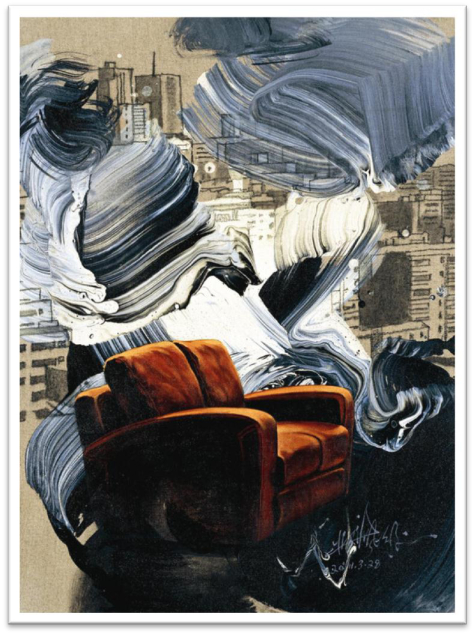
I thought I’d repost some of my favorite old Zhong Biao works along with newer work marking among other things changes over time. The image above, “Today” (今天) (acrylic on canvas 400×280 centimeters), strikes me as good a starting point as any for such an exercise.
There was not much new in the “Today” image in 2009 when it was created, as an abstract method juxtaposed with human and other animal figures have both been core elements of a Zhong Biao picture since 2005. The figures themselves are also not particularly new, with birds and airborne human beings being about as close to thematic constants as Zhong’s work provides. The most notable element of the canvas, the belly-flopping corpulent fellow, on the other hand, had not emerged in any work before, as far as I know. He, spectacular as he is, seems more variation on a theme.
I couple “Today” this with his 2013 “裁云剪水” (acrylic on canvas 130 x 388 cm):

The title is a challenge to translate. Literally its “trimming clouds and cutting water,” a phrase drawn from Ming dynasty critique of poetry that is miraculously perspicuous and creative. The work is expansive, sharing many features with Zhong’s largest painting to date “Mirage,” most particularly its panoramic quality. What is new here is relatively minute point of the abstract box, new to the vocabulary of his painting. Rather like pointillism of Seurat, one needs to take a few steps closer to see them:

Upon closer inspection, the polygons, all white in this painting, emerge as angular portals of light, like windows or other apertures in fixed structures. They also refer to pixilation, interruptions in what should be seamless digital universe that may or may not intersect with (un)virtual reality. This is particularly true when they are in a background of darker colors, such as the street level boxes around the pedestrians’ feet:

What also intrigues me about the geometric elements is their implication in terms of practice. As I’ve observed Zhong work on painting, the abstract component is usually applied first, and human and other figures drawn out over time from them. The abstract brush work is dynamic, rapid, and in larger canvases involves something very much like dance to execute. The squares are a different kind of image production altogether, it seems to me. In order to find out just how this comes together I guess I’ll have to make another trip to his studio and hang out there for a few days and watch what happens.






